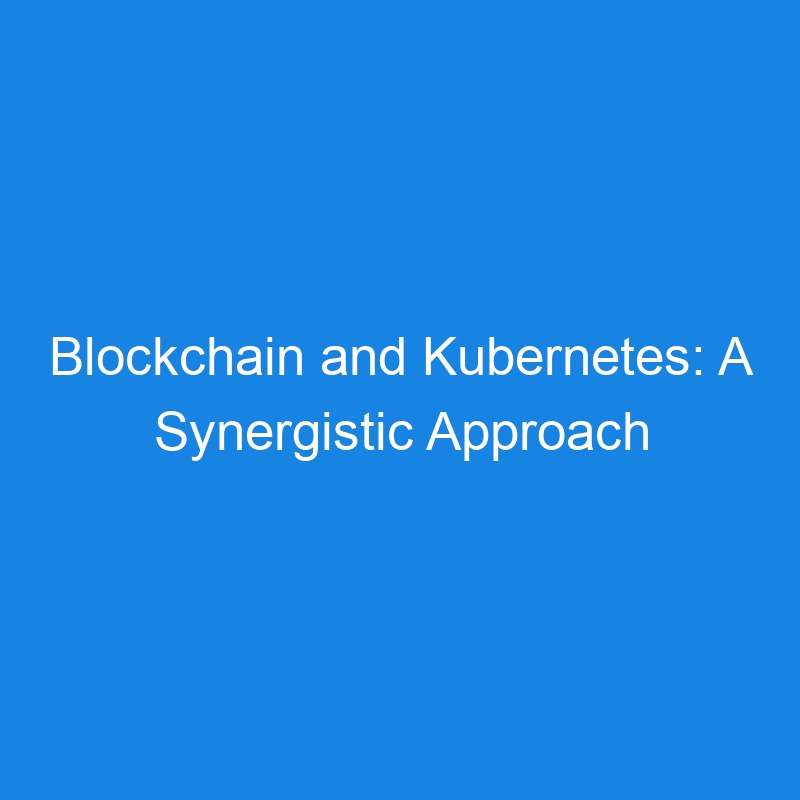Blockchain and Kubernetes are two transformative technologies that have revolutionized industries in distinct ways. While blockchain ensures transparency, security, and immutability in data transactions, Kubernetes enables efficient container orchestration. This blog explores the fundamentals of blockchain, its applications, and how it can be effectively integrated with Kubernetes for enhanced scalability and resilience.
What is Blockchain?
Blockchain is a decentralized and distributed ledger technology that records transactions across multiple nodes in a network. Unlike traditional databases, blockchain’s data is immutable, ensuring a high degree of trust and transparency.
Key Features of Blockchain:
- Decentralization: No central authority manages the data; instead, it is distributed across the network.
- Immutability: Once a transaction is recorded, it cannot be altered.
- Transparency: Transactions are visible to all participants in the network.
- Security: Cryptographic algorithms secure data and ensure its integrity.
Example of Blockchain:
One of the most popular examples of blockchain is Bitcoin, a cryptocurrency that uses blockchain to record all its transactions. Beyond cryptocurrencies, blockchain has found use cases in supply chain management, healthcare, and finance.
How Blockchain Works
Blockchain operates as a chain of blocks, where each block contains:
- Data: Transactional information.
- Hash: A unique identifier for the block.
- Previous Block Hash: Links the current block to the previous one, forming a chain.
Here’s a simplified step-by-step process:
- Transaction Initiation: A user initiates a transaction.
- Verification: Nodes in the network verify the transaction’s validity.
- Block Creation: Valid transactions are grouped into a block.
- Consensus Mechanism: The network’s nodes agree on the validity of the block using mechanisms like Proof of Work (PoW) or Proof of Stake (PoS).
- Block Addition: The verified block is added to the blockchain.
- Replication: The updated blockchain is replicated across all nodes in the network.
Below is a visual representation:
[Transaction A] -> [Transaction B] -> [Transaction C]
Block 1 --------> Block 2 --------> Block 3
[Prev Hash] [Prev Hash] [Prev Hash]
[Data & Hash] [Data & Hash] [Data & Hash]What is Kubernetes?
Kubernetes is an open-source platform for automating the deployment, scaling, and management of containerized applications. It helps manage complex application environments, ensuring high availability and resource optimization.
Key Features of Kubernetes:
- Container Orchestration: Automates the deployment and scaling of containers.
- Self-Healing: Automatically restarts failed containers.
- Load Balancing: Distributes traffic across containers to ensure efficiency.
- Scalability: Dynamically adjusts resources based on demand.
Using Blockchain with Kubernetes
Combining blockchain with Kubernetes can create robust, scalable, and efficient systems. Here’s how these two technologies complement each other:
1. Scalability:
Blockchain networks, especially public ones, often face scalability challenges. Kubernetes can deploy blockchain nodes in a distributed environment, ensuring the network can handle increased demand.
2. Resilience:
Blockchain applications rely on distributed nodes. Kubernetes ensures these nodes remain available, automatically recovering from failures and scaling resources as needed.
3. Simplified Deployment:
Managing blockchain applications involves deploying multiple components like nodes, smart contracts, and APIs. Kubernetes simplifies this by managing these components as containerized services.
4. Security:
While blockchain ensures data integrity, Kubernetes’ Role-Based Access Control (RBAC) and network policies add another layer of security.
Use Case Example:
A supply chain system using blockchain for data transparency can leverage Kubernetes to manage blockchain nodes and APIs dynamically. When transaction volume spikes, Kubernetes scales the nodes to meet demand without downtime.
Diagram: Blockchain with Kubernetes
+-------------------------------+ +-------------------------------+
| User Transactions | -> | Blockchain API Service |
+-------------------------------+ +-------------------------------+
| |
v v
+----------------+ +----------------+
| Kubernetes | | Blockchain Node|
| Cluster | | Network |
+----------------+ +----------------+
| |
Containerized Immutable
Blockchain Nodes Ledger DataConclusion
Blockchain and Kubernetes together can create resilient, scalable, and efficient ecosystems for modern applications. While blockchain ensures data integrity and transparency, Kubernetes provides the necessary scalability and resilience to support blockchain’s distributed nature. By leveraging these technologies, organizations can build robust solutions for finance, supply chain, healthcare, and beyond.
If you’re planning to integrate blockchain into your infrastructure, consider Kubernetes for seamless orchestration and management.
